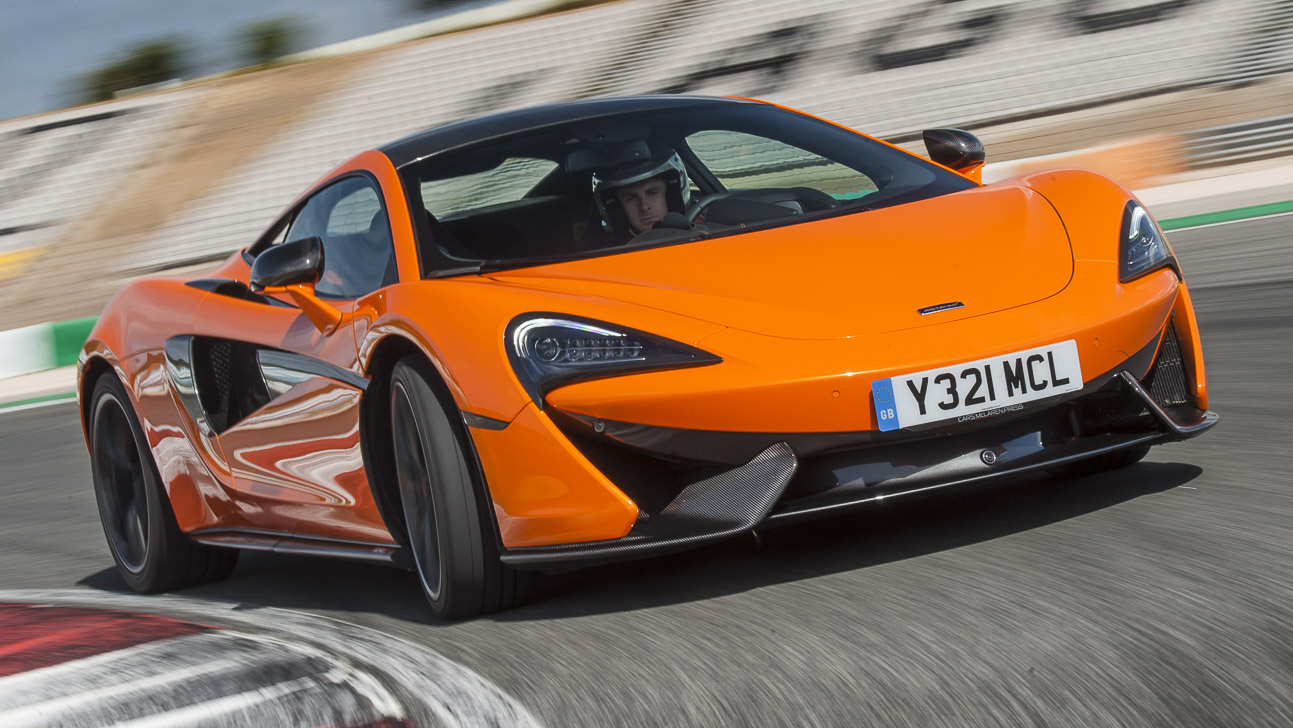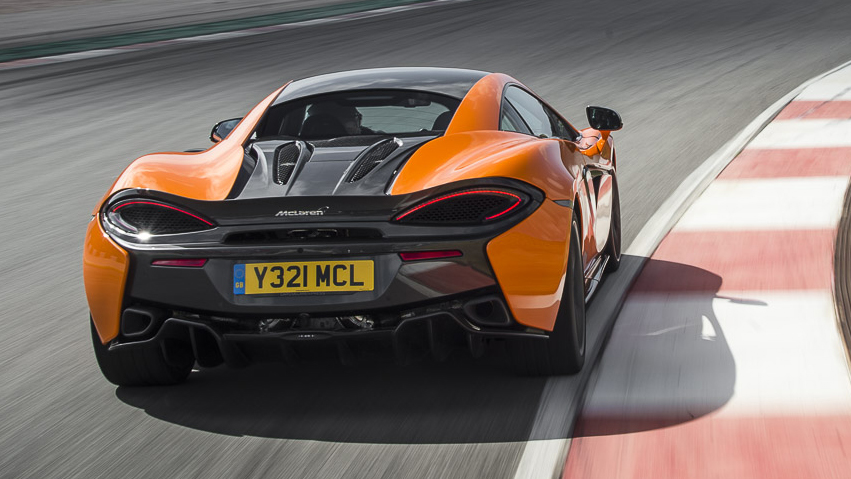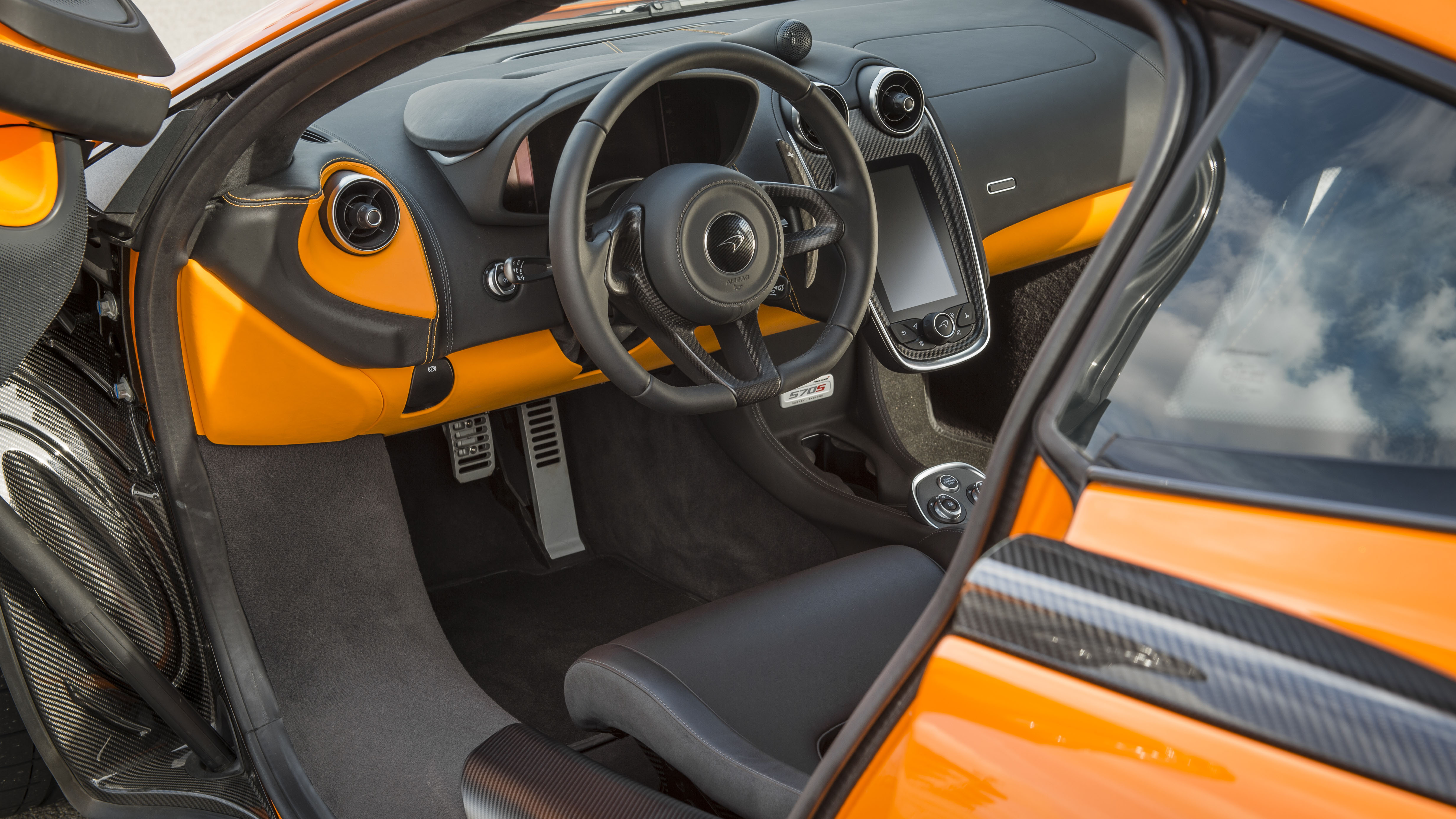
McLaren 570S review
Driving
What is it like to drive?
This is McLaren’s core territory, and boy is it good at it. The standard 570S scythes along roads, an instrument of dissection, picking them apart with its accuracy, balance and finesse. No other supercar is more agile or has more communicative steering. The 540C delivers a broadly identical driving experience, although its engine loses a bit of mid-range urgency. The 600LT is one for track enthusiasts. Don’t be tempted to have one just because it’s the ultimate Sport Series car – it’s rowdier and more tiring on road. On track, however, it’s a complete monster, stunning under brakes and turn-in, super-precise, urgent and completely thrilling.
The weak link for them all, if there is one, is the engine. And it’s hardly weak. It’s just that it doesn’t make the richest noise. No Audi R8 wail or AMG GT throb here. The sound is flat and fizzy, high-pitched and fails to get under your skin in the way the rest of the car does. But it is effective. The turbos are sharp and eager in their response and at the top end the power delivery is ferocious, the engine’s flat motorsport blare hardening to a tungsten point.
It’s plenty fast enough through the mid-range because once the turbos have spooled up, they stay on boost through gearchanges, giving the acceleration a linear quality that is sustained through every upshift. This makes the performance accessible and the McLaren very easy to drive fast. True, it’s only rear-wheel drive when many rivals send power to all four wheels, but you always feel in control of it because the chassis is so biddable and communicative. And the brakes, with less weight to shrug off, are immense – firm underfoot, easy to modulate and lovely to use.
It covers ground quickly and efficiently because the suspension deals with rotten surfaces so well. Fidget, twitch and fight are minimised as the 570S manages to remain undistracted – and this without the fancy dampers of its bigger brother. Is it harsh? No, it’s just positive, although the chassis does transmit some noise and vibration back into the cabin. Let’s put it in context with Porsche. It’s more in the mould of a GT3 than a 911 Turbo. And that’s before we step up to the 600LT. That’s GT3 RS and beyond. It’s not a GT (but then neither is McLaren’s actual GT). It schleps tolerably, not easily.
You’ll buy the McLaren because of the way it steers. Sure, the acceleration figures will have grabbed your attention, but over time you’ll realise that on a public road you’re only ever scratching the surface. At its launch we were told “McLaren wants to own steering feel”. Sounds like a pompous statement, but while other firms are battling electric power steering and fitting artificially fast steering racks, there’s something enormously pleasurable about a car that puts such tactility in your hands. The enjoyment you get from just turning the hydraulically-assisted wheel is a long term satisfaction.
This feel and sensitivity bring colossal confidence. It helps that the car never seems to grow around you or lose its agility. Instead you get utterly caught up in the process of accelerating, braking, steering and shifting. Because the suspension isn’t trying anything too tricky, it feels beautifully natural and the car moves with the road. Nothing else in the supercar class does it better.
Featured

Trending this week
- Car Review
BMW iX3






